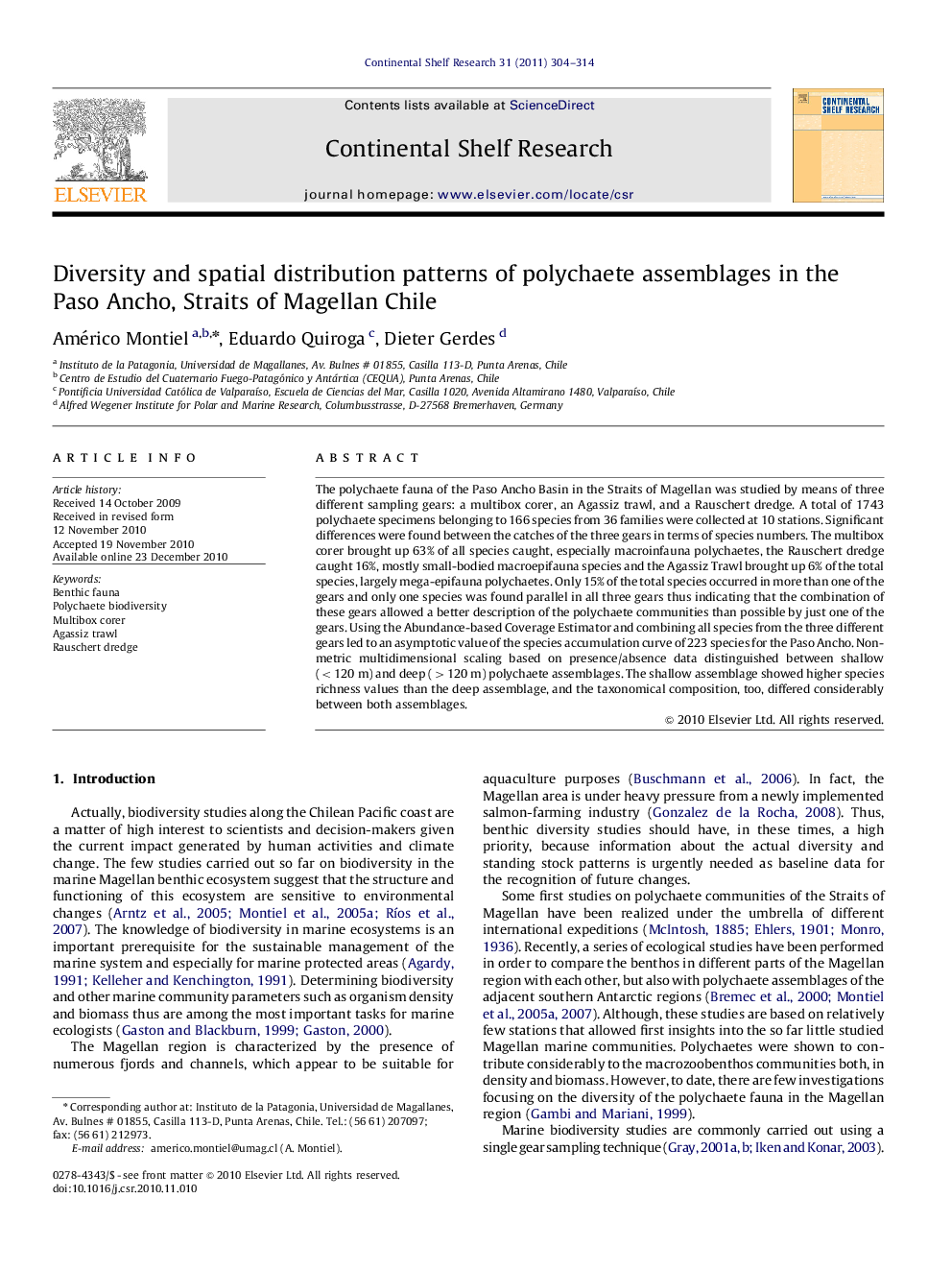| Article ID | Journal | Published Year | Pages | File Type |
|---|---|---|---|---|
| 4532708 | Continental Shelf Research | 2011 | 11 Pages |
The polychaete fauna of the Paso Ancho Basin in the Straits of Magellan was studied by means of three different sampling gears: a multibox corer, an Agassiz trawl, and a Rauschert dredge. A total of 1743 polychaete specimens belonging to 166 species from 36 families were collected at 10 stations. Significant differences were found between the catches of the three gears in terms of species numbers. The multibox corer brought up 63% of all species caught, especially macroinfauna polychaetes, the Rauschert dredge caught 16%, mostly small-bodied macroepifauna species and the Agassiz Trawl brought up 6% of the total species, largely mega-epifauna polychaetes. Only 15% of the total species occurred in more than one of the gears and only one species was found parallel in all three gears thus indicating that the combination of these gears allowed a better description of the polychaete communities than possible by just one of the gears. Using the Abundance-based Coverage Estimator and combining all species from the three different gears led to an asymptotic value of the species accumulation curve of 223 species for the Paso Ancho. Non-metric multidimensional scaling based on presence/absence data distinguished between shallow (<120 m) and deep (>120 m) polychaete assemblages. The shallow assemblage showed higher species richness values than the deep assemblage, and the taxonomical composition, too, differed considerably between both assemblages.
Research highlights► It was demonstrated that a combination of quantitative and qualitative sampling with a multibox corer and dredges yielded in the most complete inventory of the polychaete fauna described so far for the PAB. ► In total 166 polychaete species from 36 families were identified; using the abundance-based Coverage Estimator led to an asymptotic species accumulation of 223 polychaete species for the Paso Ancho. ► Significant differences were found between the gears in terms of polychaete body size and number of species caught. The multibox corer brought up 63% of all species, the Rauschert dredge caught 16% and the Agassiz Trawl 6%. ► Based on this species inventory a shallow and deep polychaete assemblage could be distinguished by means of non-metric multidimensional scaling. The taxonomic composition between both assemblages differed considerably and the shallow assemblage showed higher species richness than the deep one.
